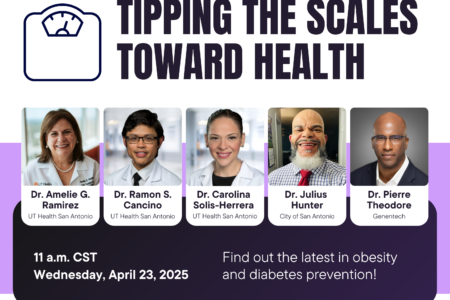
Share On Social!
National Healthy Weight Week is recognized on the third week of January every year and focuses on achieving and maintaining healthy weight through healthy eating, physical activity, optimal sleep, and stress reduction.
Obesity affects more than 40% of Americans, placing them at higher risk for heart disease, stroke, type 2 diabetes, and certain types of cancer.
Latino adults and children have among the highest rates of obesity.
With this in mind, let’s explore resources that can help you start achieving a healthy weight and improve your health!
Get Help Changing Your Habits for Healthy Weight
The National Institute of Diabetes and Digestive and Kidney Diseases (NIDDK) provides a guide, “Changing Your Habits for Better Health,” in English or Spanish.

The guide outlines four stages people often go through to change their health behavior:
- contemplation
- preparation
- action
- maintenance
“Sometimes it takes a while before changes become new habits. And, you may face roadblocks along the way,” according to the NIDDK.
“Adopting new, healthier habits may protect you from serious health problems like obesity and diabetes. New habits, like healthy eating and regular physical activity, may also help you manage your weight and have more energy. After a while, if you stick with these changes, they may become part of your daily routine.”
The NIDDK also has a resource, “Staying Active at Any Size” in English or Spanish, with tips and guidelines on being and staying active.
“Not only can you be active at any size, you can have fun and feel good at the same time,” according to the NIDDK.
Take Steps to Improve Eating for a Healthy Weight
The USDA provides several resources, including the MyPlate website in English and Spanish, which offers tips and resources that support healthy dietary patterns.
The MyPlate website highlights the benefits of healthy eating and the importance of incorporating all five food groups into meals.
Individuals can also get a customized MyPlate Plan based on their age, height, weight, and physical activity level.
The Start Simple with MyPlate app is also a helpful tool and easy- to-use app that can help you create and meet healthy eating goals.
“Use the Start Simple with MyPlate app to pick simple daily food goals, see real-time progress, and earn badges along the way,” according to the USDA.
Find Stories on Integrating Healthy Habits for a Healthy Weight
The Office of Disease Prevention and Health Promotion created the “Move Your Way Healthy Eating Integration Resources” in English and Spanish.
The resource includes six stories that speak to how different individuals integrate physical activity and healthy eating into their daily lives.
Hear real-life stories of how people and their families eat healthy and stay active, like Luis Rodriguez.
“What works for us is planning meals together and getting the kids involved in the kitchen. Every weekend, the kids help us make a meal plan and write a grocery list with everything we need,” said Rodriguez.
Read more about the Rodriguez family and others here.
How to Change Your Community for Healthy Weight
Latino families often face systemic health inequities that hurt their opportunity for good health.
Challenges include low wages and limited employee benefits, underperforming schools, lack of medical providers, unstable and unaffordable housing, unreliable transportation options, unsafe streets and parks, and limited availability of nutritious food.
That creates an environment for the rise of obesity.
Clinical trials help us fight for our familia.
Clinical trials are studies that help researchers learn more to help slow, manage, and treat Alzheimer’s and cancer for current and future family members. But without volunteers for clinical trials, the benefits may miss this group.
Visit our clinical trials page to find a clinical trial, read about hero volunteers, and more!
“Volunteers in clinical trials are not only helping themselves, but they’re also building a future with better treatments that can help their families in the future,” said Dr. Amelie Ramirez, director of Salud America! and the Institute for Health Promotion Research at UT Health San Antonio.
By The Numbers
142
Percent
Expected rise in Latino cancer cases in coming years



